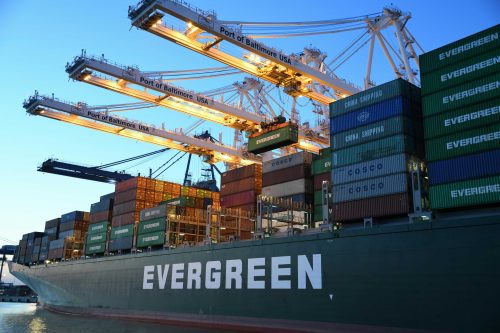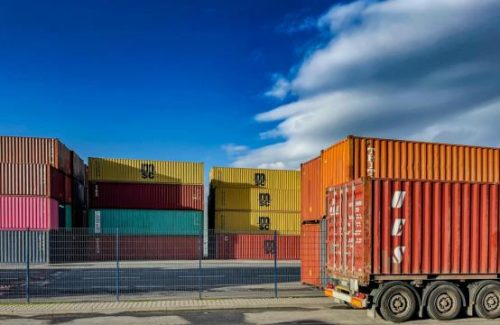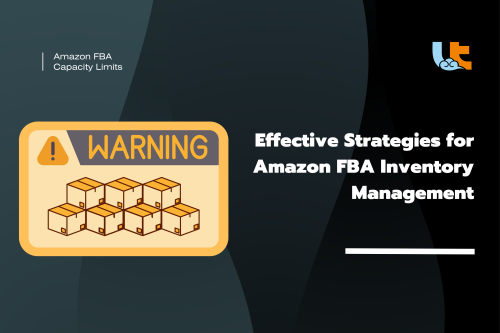
In today's globalized economy, cross-border trade between the United States and Canada is integral for many businesses. However, successfully navigating this trade route requires a thorough understanding of the various shipping restrictions and regulations governing goods transportation between these neighboring countries. Whether you are a seasoned exporter or new to international shipping, being well-versed in these restrictions is crucial to avoid delays, prevent costly fines, and ensure smooth delivery. This comprehensive guide aims to demystify the complexities of US to Canada shipping restrictions, equipping you with the knowledge needed to optimize your logistics and enhance your business operations.
US to Canada Trade Relationship
The trade relationship between the United States and Canada is one of the most robust and enduring in the world. Rooted in geographical proximity and cultural ties, this relationship has evolved significantly over the decades. Historically, the two countries have enjoyed a mutually beneficial trade partnership, underpinned by various trade agreements.
The Auto Pact of 1965, for example, laid the groundwork for integrated automotive production, while the Canada-United States Free Trade Agreement (CUSFTA) of 1988 further reduced trade barriers. The implementation of the North American Free Trade Agreement (NAFTA) in 1994 and its successor, the United States-Mexico-Canada Agreement (USMCA) in 2020, have further solidified and modernized this trade relationship, making it easier and more profitable for businesses on both sides of the border to engage in cross-border trade.
According to the data provided by statista:In 2023, the total value of U.S. trade in goods with Canada amounted to 774 billion U.S. dollars; composed of 353.2 billion U.S. dollars in exports and 421.1 billion U.S. dollars in imports.
This high volume of trade underscores the importance of understanding and navigating shipping restrictions to ensure the smooth and efficient flow of goods across the border.
Key Shipping Restrictions and Regulations
Customs Declarations
Explanation: When shipping goods from the US to Canada, it is essential to provide accurate and complete customs declarations. This involves detailing the contents, value, and origin of the goods being shipped.
Importance: Proper declarations help customs authorities assess duties and taxes accurately and ensure compliance with both countries' regulations.
Documentation Requirements
Commercial Invoice: This document provides detailed information about the goods being shipped, including their value, description, and the terms of sale.
Bill of Lading: A contract between the shipper and the carrier outlining the details of the shipment.
Canada Customs Invoice (CCI): Required for commercial shipments valued over CAD 2,500.
NAFTA Certificate of Origin: Used to claim preferential tariff treatment under the USMCA, confirming that goods meet the agreement's rules of origin.
Packing List: A detailed list of all items in the shipment, used for verification and customs clearance.
Restricted and Prohibited Items
Prohibited Items: Items that cannot be shipped to Canada under any circumstances.
Examples include:
- Certain firearms and ammunition.
- Hazardous materials not complying with transportation regulations.
- Illegal substances and drug paraphernalia.
- Specific agricultural products and plants that may pose a biosecurity risk.
Restricted Items: Items that may be shipped to Canada but with specific restrictions or requirements.
Examples include:
- Alcohol: Requires permits and may be subject to provincial regulations.
- Tobacco: Subject to strict import limits and excise taxes.
- Pharmaceuticals: Must comply with Health Canada regulations and may require permits.
- Cultural Property: Requires certification under the Cultural Property Export and Import Act.
Tariffs and Duties
Duty Rates
Explanation: Duties are taxes imposed on imported goods. The rate varies depending on the type of goods and their origin.
Calculation: Duties are calculated based on the value of the goods, their classification under the Harmonized System (HS), and any applicable trade agreements.
Tariff Classifications
Harmonized System (HS) Code: A standardized numerical method of classifying traded products. Accurate HS codes are crucial for determining the correct duty rates.
Importance: Correct tariff classification ensures that goods are assessed accurately for duties and helps avoid delays and penalties.
By understanding these key shipping restrictions and regulations, businesses can better prepare their shipments, ensuring compliance and minimizing the risk of delays and additional costs.
Modes of transportation and Carriers
Common modes of transportation
1. Air Freight
- Pros:
- Speed: Fastest method for shipping, ideal for time-sensitive shipments.
- Reliability: Regular flight schedules provide consistent delivery times.
- Security: High level of security reduces the risk of damage or theft.
- Cons:
- Cost: Generally more expensive than other methods.
- Size and Weight Limitations: Restrictions on the size and weight of shipments.
2. Ground Freight
- Pros:
- Cost-Effective: Often cheaper than air freight for larger shipments.
- Flexibility: Suitable for a wide range of shipment sizes and types.
- Accessibility: Can deliver to remote areas not serviced by air or sea.
- Cons:
- Speed: Slower than air freight, especially for long distances.
- Regulations: Subject to cross-border regulations and potential delays at customs.
3. Sea Freight
- Pros:
- Cost-Effective for Large Shipments: Economical for bulk shipments and heavy goods.
- Capacity: Can handle oversized items and large volumes.
- Global Reach: Access to international ports.
- Cons:
- Speed: Slowest method, with transit times ranging from weeks to months.
- Complexity: More complex logistics and documentation requirements.
Choosing the Right Carrier
1. FedEx
- Strengths: Extensive air and ground network, reliable service, and robust tracking capabilities.
- Best For: Time-sensitive shipments, small parcels, and e-commerce deliveries.
2. UPS
- Strengths: Comprehensive ground and air services, strong logistics expertise, and wide range of shipping options.
- Best For: Versatile shipping needs, including small parcels and freight shipments.
3. DHL
- Strengths: Strong international presence, specialized in cross-border shipping, and efficient customs clearance procedures.
- Best For: International shipments, especially those requiring expedited delivery.
4. Canada Post
- Strengths: Extensive domestic network within Canada, cost-effective options for smaller parcels.
- Best For: Small parcels and less time-sensitive shipments to Canada.
5. Purolator
- Strengths: Strong presence in Canada, reliable ground and air services, and competitive rates.
- Best For: Shipping within Canada and from the US to Canada, particularly for business-to-business deliveries.
Factors to Consider When Choosing a Carrier
1. Cost: Compare rates based on shipment size, weight, and delivery speed.
2. Delivery Time: Choose a carrier that meets your desired delivery timeline.
3. Reliability: Look for carriers with a track record of reliable service and on-time deliveries.
4. Tracking Capabilities: Ensure the carrier offers robust tracking tools to monitor your shipment's progress.
5. Customer Service: Evaluate the carrier's customer support options for resolving issues or answering questions.
6. Special Requirements: Consider any special requirements, such as handling fragile items or hazardous materials.
Selecting the right shipping method and carrier is critical for ensuring timely and cost-effective delivery of goods from the US to Canada. By understanding the pros and cons of different shipping methods and evaluating carriers based on essential factors, businesses can optimize their shipping processes and enhance customer satisfaction.
Best Practices for Smooth Shipping
Ensuring smooth shipping from the US to Canada involves careful planning, compliance with regulations, and the use of effective strategies. Here are some best practices to help streamline your shipping process:
Accurate Documentation
1. Complete and Accurate Paperwork:
- Ensure all necessary documents are correctly filled out: This includes commercial invoices, bills of lading, packing lists, and any required certificates or permits.
- Double-check information: Verify that all details, such as product descriptions, values, and HS codes, are accurate and consistent across all documents.
2. Use Electronic Documentation:
- E-documents: Whenever possible, use electronic documentation to speed up processing times and reduce the risk of errors or lost paperwork.
Compliance with Regulations
1. Stay Updated on Regulations:
- Regularly review customs and trade regulations: Keep up to date with changes in both US and Canadian regulations to ensure compliance.
- Consult with Experts: Work with customs brokers or trade consultants who can provide guidance on current regulations and best practices.
2. Understand Restricted and Prohibited Items:
- Know the restrictions: Familiarize yourself with items that are restricted or prohibited from being shipped to Canada, and ensure your shipments comply with these rules.
Efficient Packaging and Labeling
1. Use Compliant Packaging Materials:
- Follow packaging standards: Use materials that meet regulatory standards to protect your goods and ensure they are not held up at customs.
- Properly protect goods: Ensure items are securely packed to prevent damage during transit.
2. Correct Labeling:
- Bilingual Labels: For certain products, ensure labels are in both English and French as required by Canadian regulations.
- Clear and Accurate Labels: Include all necessary information, such as product descriptions, handling instructions, and compliance marks.
Optimize Shipping Methods
1. Choose the Right Shipping Method:
- Match method to shipment needs: Select the appropriate shipping method (air, ground, or sea) based on the size, weight, and urgency of your shipment.
- Consider cost-effectiveness: Balance cost and delivery time to find the most economical option that meets your needs.
2. Select Reliable Carriers:
- Research carriers: Choose carriers with a strong track record for reliability and on-time delivery.
- Negotiate rates: If you ship frequently, negotiate rates with carriers to get the best possible pricing.
Leverage Technology
1. Use Shipping Software:
- Automate processes: Utilize shipping software to automate tasks such as label generation, customs documentation, and tracking.
- Integration: Integrate shipping software with your inventory and order management systems for seamless operations.
2. Track Shipments:
- Real-time tracking: Use carriers that offer real-time tracking to monitor your shipments and address any issues promptly.
- Notification systems: Set up notifications to alert you of any delays or problems during transit.
Risk Management
1. Insure Shipments:
- Adequate coverage: Ensure your shipments are adequately insured to protect against loss, damage, or theft.
- Understand policies: Familiarize yourself with the terms and conditions of your insurance policies.
2. Plan for Contingencies:
- Backup plans: Develop contingency plans for potential disruptions, such as customs delays or carrier issues.
- Supplier diversification: Where possible, diversify your supplier base to mitigate risks associated with relying on a single source.
Build Strong Relationships
1. Work with Customs Brokers:
- Expert assistance: Partner with experienced customs brokers who can help navigate complex customs procedures and ensure compliance.
- Smooth clearance: Brokers can facilitate smoother and faster customs clearance, reducing the risk of delays.
2. Communicate with Stakeholders:
- Keep all parties informed: Maintain open lines of communication with suppliers, carriers, and customers to ensure everyone is aware of shipping statuses and any potential issues.
- Proactive problem-solving: Address any issues promptly and keep stakeholders informed of resolutions.
Embracing these strategies will help ensure timely deliveries, reduce costs, and enhance overall customer satisfaction.
Navigating the complexities of shipping from the US to Canada requires a thorough understanding of the various restrictions, regulations, and best practices that govern cross-border logistics. By being well-informed about customs regulations, documentation requirements, and the specific restrictions on certain goods, businesses can avoid costly delays and fines, ensuring a smooth shipping process.
Choosing the right shipping method and carrier, such as linktrans, along with adhering to packaging and labeling standards, further enhances the efficiency and reliability of your shipments. Leveraging technology for automation and real-time tracking, coupled with effective risk management strategies, can significantly reduce the challenges associated with international shipping.
For reliable and efficient shipping, trust LinkTrans for all your logistics needs.








